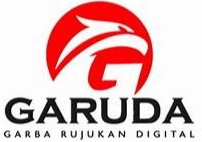Karakterisasi Material Braket Kawat Gigi Dalam Larutan Saliva Buatan
DOI: https://doi.org/10.25077/metal.5.1.33-37.2021
Author(s)
Nurbaiti Nurbaiti (Universitas Bengkulu)Hendri Van Hoten (Universitas Bengkulu)
Putra Bismantolo (Universitas Bengkulu)
Abstract
This research is about Characterization of Metal and Ceramic Brace Brackets in Artificial Saliva Solution. The shape of teeth in humans is different, some are neat and some are not. With the times, the problem of untidy teeth can be fixed using braces / braces. Nowadays, the use of braces / braces is not only for straightening teeth but for lifestyle and to support a more attractive and attractive appearance. Braces consist of brackets and curved wires. Braces brackets can be made from a variety of materials, for example: metals, ceramics and composites. This study was directed to determine the biocompatible properties of the bracket in the body by looking at the elemental content after immersion with a solution of saliva (artificial saliva) for approximately 4 weeks. The results of the hardness examination showed an increase between before and after immersion. The chemical composition examination using XRD (X-Ray Diffraction) has not shown any significant changes between the materials before and after immersion. XRD results show that there are no corrosive materials or other hazardous materials on the surface of the braces bracket material.
Keywords
Full Text:
PDFReferences
B. D. Ratner, etc. “Biomaterials Science: An Introduction to Materials in medicine”. Elsevier Academic Press, pp. 283-375.
S. Newhart, Braces Manual, Newhart Orthodontic Braces.
.”Basic Orthodontic”. Academy of Gp Orthodontic, www.academygportho.com, diakses tanggal 22 Juni 2020.
H. Khan, Orthodontic Brackets, The University of Lahore Pakistan.
ASTM Handbook. “Standard Practice for Laboratory Immersion Corrosion Testing of Titanium”.Vol. 1, 2004, pp. 206-213.
ASM Handbook. “Fundamentals of Medical Implant Materials: Materials for Medical Devices”. ASM International, Materials Park, Ohio, USA, Vol. 23, 2012, pp.303-325.
N. Suningsih, N. Nugraha, dan J. Andayani, “Level Larutan McDougall dan Asal Cairan Rumen pada Teknik In Vitro”. Jurnal Sain Peternakan Indonesia, Vol. 12, No. 3, 2017, pp. 341-352.
ASTM 348. “Standard Test Methods for Knoop and Vickers Hardness Materials”. ASTM International, 100 Barr Harbour Dr., PO Box C700 West Conshohocken, PA. 19428-2959, United States.
 Article Metrics
Article Metrics
This article has been read : 602 timesPDF file viewed/downloaded : 286 times
Copyright (c) 2021 Nurbaiti Nurbaiti, Hendri Van Hoten, Putra Bismantolo
View METAL's Stats

This work is licensed under a Creative Commons Attribution-NonCommercial-ShareAlike 4.0 International License.







